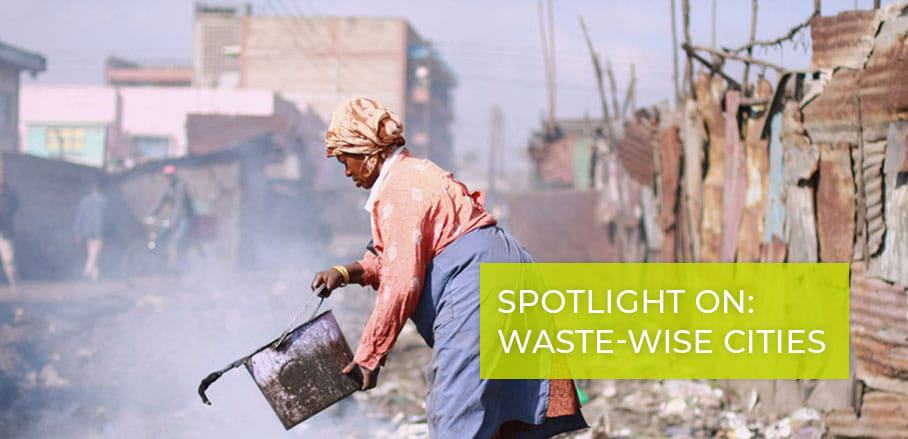Through the Gender Lens: Recommendations for Municipal Waste Management
In Bamenda, Cameroon, municipal waste management remains blind to how gender roles shape waste generation. Hedwig K. Ngwa Akum analyses how bridging the gender gap between waste generation and waste management would improve sanitation in the city.
Like in many other cities in Cameroon and Africa, the waste management in Bamenda lags behind the rate of waste generation. One aspect of this is that waste generation and handling, especially at the primary level of management, are gendered: due to traditional gender roles, it is mainly girls and women who generate and handle waste at their workplaces and their homes. In contrast, the municipal waste management strategies are either gender neutral or blind as the voices, interests, and needs of women and children, the key actors, are not considered.
This mismatch has severe consequences: huge mounds of refuse are very visible along street sides, streams, culverts, and even very close to dwellings. The devastating effects of this poor waste disposal include degraded aesthetics, inconvenience, environmental pollution, and major public health risks to cities and inhabitants. Mainstreaming gender in council regulations and strategies can greatly improve the outcome of waste management.
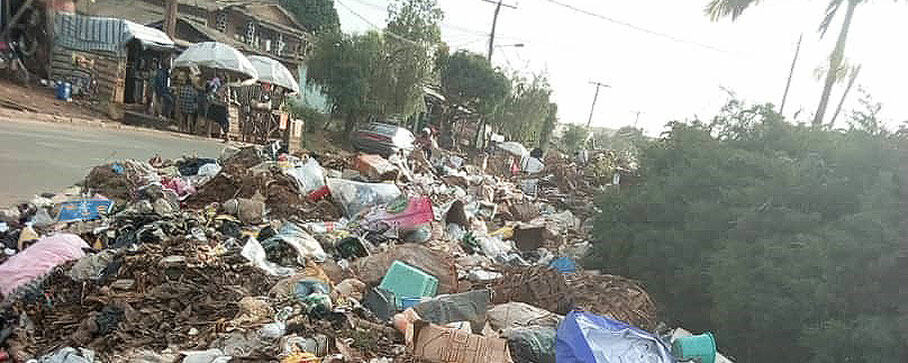
Open dump site by residency © Hedwig K. Ngwa Akum
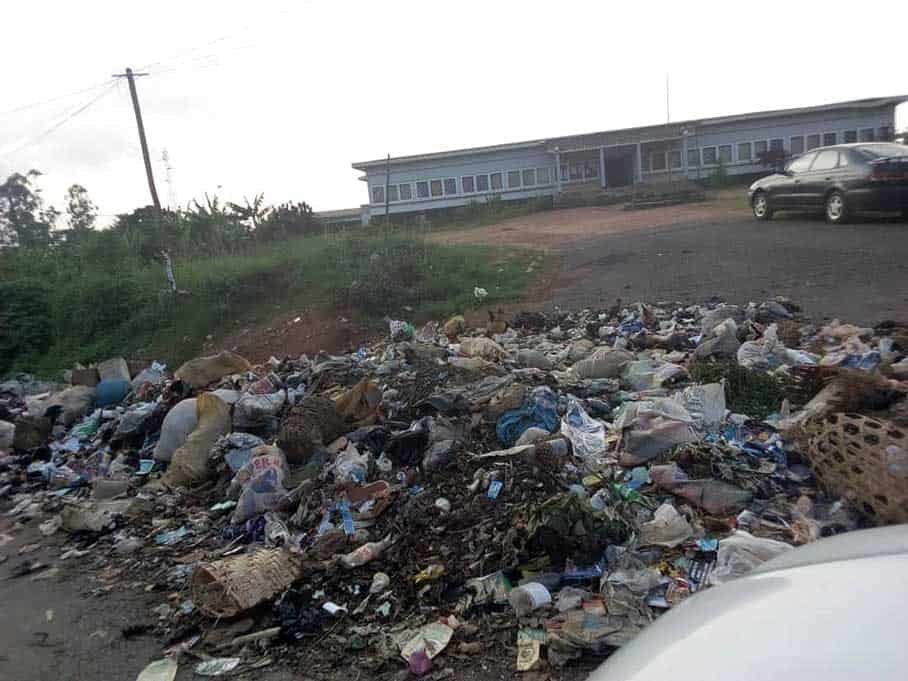
Open dump site by the stream © Hedwig K. Ngwa Akum
The Waste Generation and Management Situation in Bamenda
Unprecedented urbanisation and changes in consumption patterns and lifestyles are the causes for increased waste generation in BCC. The Council allocates as much as 50 per cent of its expenditures on solid waste management. Even at that, Municipal Solid Waste (MSW) management efforts still lag behind the rate of waste generation, causing significant environmental and public health risks.
The major responsibilities of the BCC in waste management include: 1) Location of communal waste disposal sites within the city; 2) Provision of large trash cans at the identified sites; 3) Evacuation of waste and 4) Location of secondary disposal sites (non-sanitary landfills) in the periphery.
Council authorities identify several causes of the waste management’s inadequacies: unprecedented urbanisation, limited funding, and inadequate technology and expertise. The gender factor is another major hindrance to efficient waste management, yet unfortunately it is often omitted.
Waste through a Gender-Lens
Households and markets are the centres that account for over 90 per cent of MSW in Bamenda, a city lacking in industries. Gender power relations, gender division of labour, and gender roles make women and children the major agents of waste generation and management. As such, they can greatly determine the sanitation of the city environment.
Consequently, gender dynamics in waste generation and management should constitute a component in developing MSW management systems if they are to efficiently address the daunting solid waste situation of Bamenda. Yet, BCC waste collection strategies are either gender blind or gender neutral. None of them are gender sensitive.
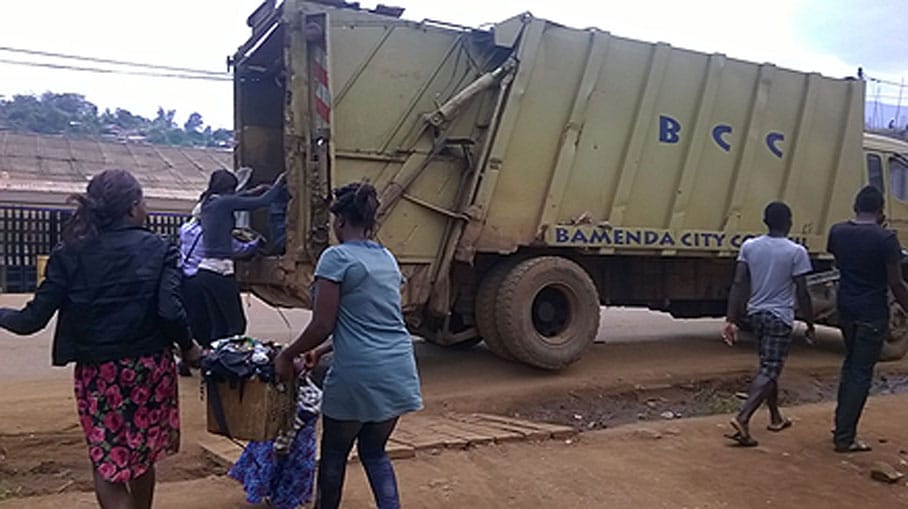
The pick-up truck © Hedwig K. Ngwa Akum
Weaknesses and Recommendations
The key role of women and children in primary level waste generation and management activities requires gender sensitive waste budgets, policies, and strategies. Gender gaps can be addressed through inclusion by the following proposals for improvement.
- Insufficient waste collection points and distance: Statistics reveal that the current number and spatial distribution of communal public bins is grossly insufficient. In addition, the bins are too far away from households: Above 70 per cent of households walk a minimum distance of 100 metres to reach a communal trash can. This is discouraging and takes up much time, particularly for women with triple gender roles (reproductive, productive, and community); the provision of more communal bins spatially located within convenient distances is important.
- Irregular waste collection schedule: This irregularity impacts adversely on the condition of the waste site, the length of time households store their waste, and whether they look for alternative waste disposal sites, which are usually environmental destructive. Long standing accumulation of waste is a disease factor that adds to women’s work load as care givers. Regular collection of waste, especially by the itinerant pick-up truck, at known and respected schedules will also help to ensure effective use of council provided facilities.
- Perceiving waste only as a burden: Both households and the waste management authorities consider and present waste items as useless. Consequently, there is no waste separation at any point along the waste management chain. The Council, in collaboration with NGOs and other waste management actors should make waste resourceful. This can be done by a policy that adds monetary value to household waste through incentives for waste separation. Voices from the field reveal that many households are ready to separate their waste if that effort is remunerated. Such policy will create income avenues for women that meet their strategic gender needs.
- Poor waste disposal practices: Undesirable waste disposal practices are common; waste dumping in streams and swamps, around the communal waste bin rather than inside, disposal in gutters and along the roads, open burning, littering, etc. A policy that discourages waste disposal, particularly of dangerous waste into water courses and swamps, is needed. Such policy solicits environmental education that creates awareness, institutes fines for defaulters, and awards to promoters of good practices. However, these highlighted poor practices can only be averted if authorised waste collection points are conveniently situated.
- Communal waste equipment is not adaptable to the users. Waste is often dumped around the public waste bin even when it is not full. One reason for this may be the inability of children to get waste into high-walled bins. Strategy that takes into consideration that children play a principal role in waste disposal is very much needed. The conception, production, and provision of communal waste bins should pay attention to the shape and height of the waste equipment and fashioned within reach of children.
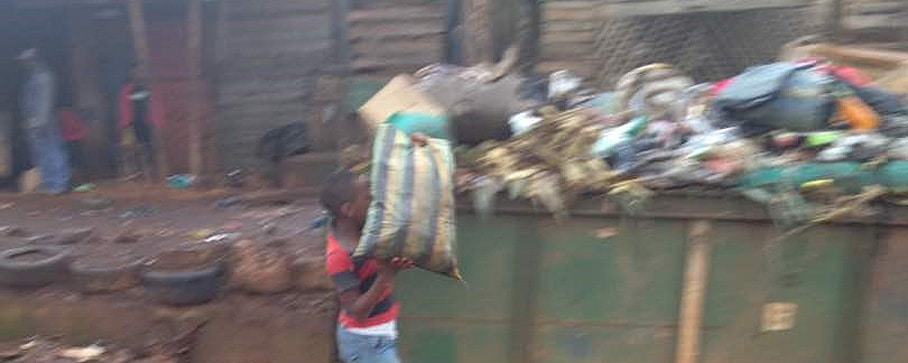
The inadaptable trash can for children © Hedwig K. Ngwa Akum
- There is a low level of public participation in Council waste management planning. Decision making about waste collection strategies such as the types of bins to use, location of communal bins, and mobile waste van schedule is solely determined by the council. The voices of stakeholders (households, market vendors and NGOs, private waste operators, etc.) are necessary.
- The insensitive attitude of the waste collection team: Impatience and lack of tolerance from the waste workers impact negatively on the way households and other inhabitants use the waste facilities. The team, particularly the mobile van pick-up workers, is called upon to be patient, tolerant, and polite.
For all these reasons, integrating a gender perspective into a more holistic MSW management system in Bamenda will significantly improve council efforts.
Much of the material in this article is published in Hedwig K.Ngwa Akum’s “A Gender Perspective of municipal solid waste generation and management in the city of Bamenda, Cameroon” in which she argues that the omission of a gender perspective in municipal waste policies and strategies is another major barrier to efficient waste management.
